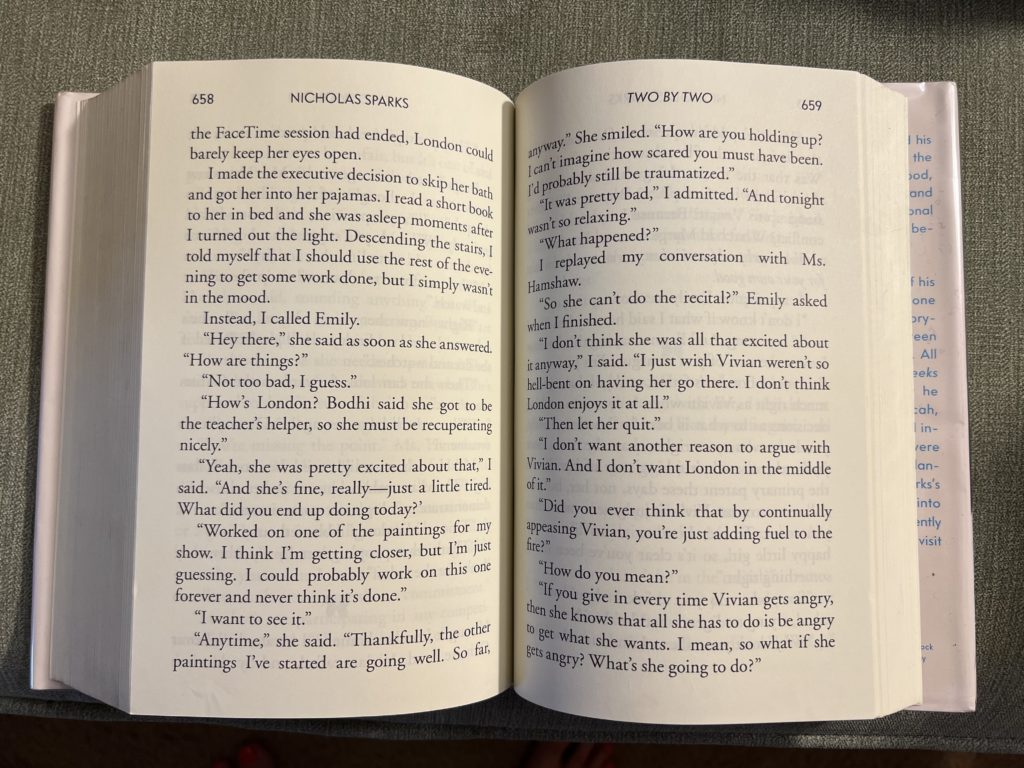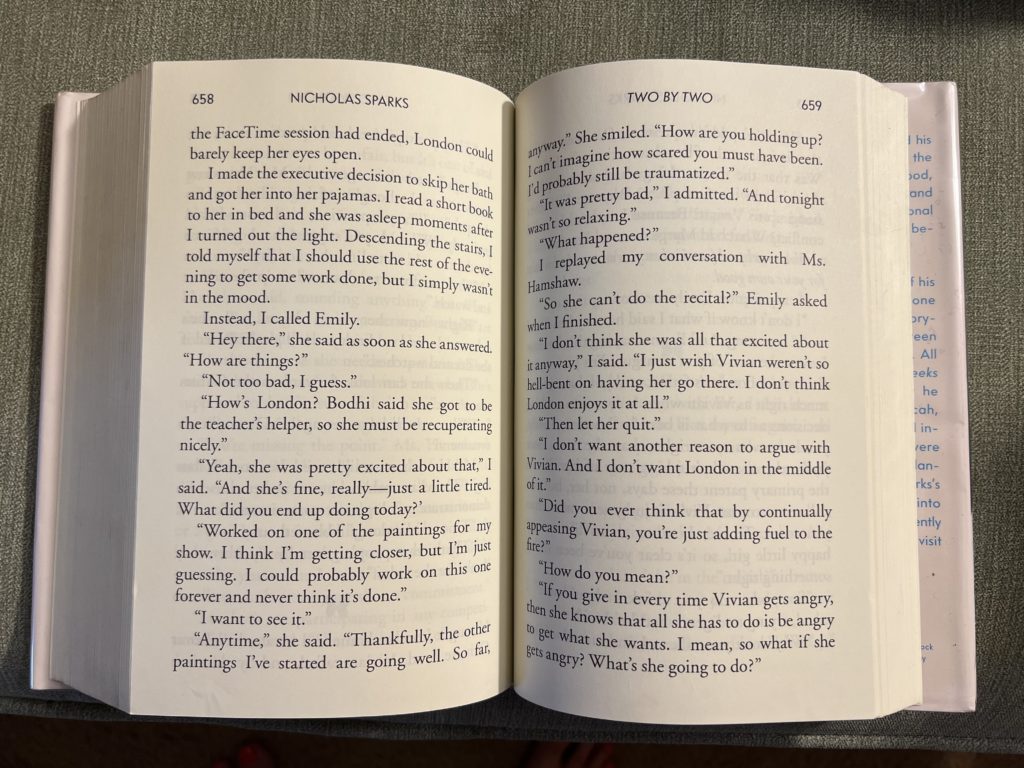
Description:
I’m sure most of us have seen large print books throughout our life or requested the large print version by accident, but in case you haven’t, they are books with larger print than the average book. Based on the Library of Congress, “large-print materials are most commonly available in 16- to 18-point type” (https://www.loc.gov/nls/resources/general-resources-on-disabilities/large-print-materials/). Large print books are typically only available in paperback and can cost more than the “normal” 10-12 point font version of the book.
Features:
Font size:
- The font size is easy to read even in a photo.
- It makes it easier for people with vision issues to read new releases as a physical book instead of having an e-reader they need to make the font bigger.
- There is only one size font when the large print book is published, which makes it difficult for people who need larger font sizes to be able to take out a physical book. By using the functional solutions model, a library could include or even have page magnifiers to check out on their cards.
Light Weight:
- Typically large print books are published as paperback books. (The one pictured above is an old library book which is why it is a hardcover.) The paperback makes it lighter and easier to carry around.
- Since large print books need more pages for the text, it can make the book thicker and therefore be more difficult to carry around than the thinner counterpart.
Durability:
- Because large print books are typically published as paperbacks, this makes them not as durable as a hardcover. The covers get bent and the binding of the paper is of lower quality than a hardcover.
- The pages of a large print book are not as thick as your average book. They tend to bend easily and can even rip.
Accessibility:
- Libraries typically have a good selection of large print books. This is a great example of the functional solutions model being put into play. The books are available to everyone and gives equal opportunity for everyone to take out the books free of charge.
- Bookstores, such as Barnes and Noble, have a decent selection of large print books in their store to browse. When I was working there, there was only one copy of each book, making it difficult for people to purchase a popular book in large print.
- In my local library and Barnes and Noble, the books are in a separate section, which can make it feel ostracized and sectioned off from everyone else. If the social model was used, the large print books would be included with the “normal” books and sit right next to the “normal” font size book.
- Large print books are not always available on the day that the “normal” book is available. Sometimes the large print versions come out a week or so after and sometimes they come out a few months later. This does not allow everyone to have equal access to the print version the day the book is released.
Affordability:
- While large print books are available at a public library for free, a person might still want to own them to reread at their leisure. Large print books are more expensive than their “normal” counterparts. As you can see from the screenshot from Amazon, the paperback “normal” book is six dollars cheaper than the large print book. If you look at the original prices, the large print book is $29.00 and the “normal” one is $17.99. That is a $12 difference! That might not seem bad when just looking at one book, but as a person who likes to own her books, that will be $100 more in just nine books.
Large print books are great for people who have vision issues, but there needs to be a more easy way for people to get their hands on them. Institutions, such as public libraries, should offer magnifiers when the books are getting checked out in case the patron needs the font to be bigger. It is nice to have all the large print in their own section, but that might make anyone who is on the younger side feel weird about going to that section. While the accessibility of the large print books are good, I do think they could be better.
